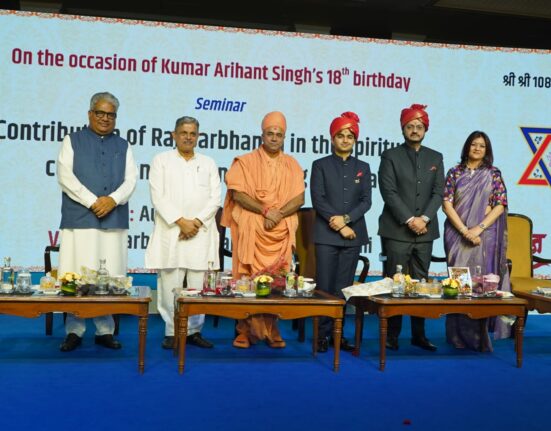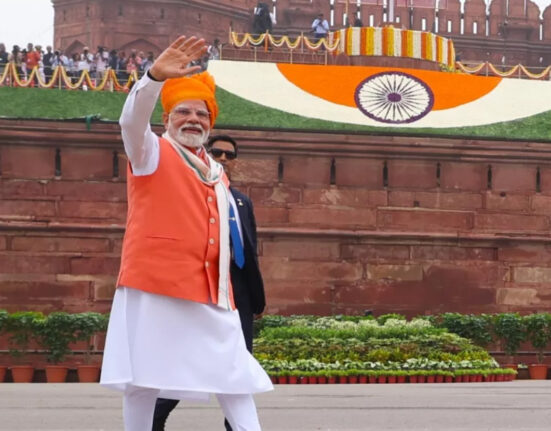Inequality between government and private schools is a challenge for both our society and nation
New Delhi : Knowledge and Awareness Mapping Platform (KAMP), which is working to prepare Indian students as per global standards and promote STEM (Science, Technology, Engineering, Mathematics) education, has found in its latest study that there is a deep gap in the quality of education and availability of resources in government and private schools of North India, which is continuously increasing. Government schools, which lay the foundation of the future of millions of children, are today considered to be schools chosen out of compulsion. While private schools have become a symbol of quality education and opportunities, government schools are considered reserved for the deprived sections. This inequality is a big challenge for both our society and nation.
Ashish Mittal, Project Director of Knowledge and Awareness Mapping Platform (KAMP) established by Council of Scientific and Industrial Research-National Institute of Science Communication and Policy Research, says that the feeling of inferiority in the minds of children of government schools in comparison to private schools not only hurts their self-esteem, but also has a deep impact on their entire life. Therefore, government schools need to be made not “schools of the poor”, but “temples of dreams” and centers of “national pride”. This change will not only improve the lives of children, but will also strengthen the sense of equality and justice in the society.
More than 3.5 lakh children have benefited from the free online workshops of KAMP, established with the objective of evaluating and upgrading the scientific potential and skills of students. During this time, experts associated with this platform found that every child in India dreams of becoming a doctor, engineer, scientist, artist, or player. But due to lack of equal opportunities, their dreams remain unfulfilled. However, the government has launched several schemes to improve government schools. ‘PM-Shri School Initiative’ is a historic step in this direction. This scheme is an attempt to transform government schools into state-of-the-art “model schools of the 21st century”. Under this scheme, more than 14,500 schools are being developed to set new standards of education. In these schools, emphasis will be laid on high quality education, modern teaching methods, sensitivity towards the environment, and holistic development.
Delhi government’s ‘Mission Buniyaad’ is another great example of improvement in primary education, which showed 80% improvement in students’ learning ability. Kerala’s Hi-Tech Classroom Project has transformed government schools into smart classrooms. The mid-day meal scheme has not only retained children in schools but also increased their nutrition levels. These initiatives are commendable, but the gap between government and private schools still remains the biggest hurdle in the way of children’s future. Now the time has come to make government schools “National Model Schools” where children can get quality education, co-curricular opportunities, and future-ready education.
According to the National Achievement Survey (NAS) data of 2021, 50% of class 5 government school students are weak in basic math and reading, while this percentage is much lower among private school students. Lack of teachers, lack of facilities, and apathy towards education have tarnished the image of government schools. In contrast, private schools provide better teaching methods, modern technology and individual attention to help children move towards their dreams.
Ashish Mittal says that just as India has created prestigious institutions like IIT, IIM and AIIMS in higher education, similarly there is a need to create world-class institutions at the school level. If government schools are given the status of “National School of Excellence”, where education is not limited to the curriculum, but children get an opportunity to develop their full potential, then better results can be achieved. Government schools have to be made inspirational for every section of the society, so that they can be seen as “schools of every section” instead of “schools of the poor”. For this, it is also necessary to train teachers in modern technology and teaching methods.
KAMP, which is providing an effective platform for the overall development of students, emphasizes that improvement in government schools cannot be measured only by examination results. Holistic evaluation, which includes the educational environment of the school, teaching methods, mental and physical health of students, and community participation, can be a concrete step. For example, if students in a school are weak in math or science, it may not be just a problem of teaching methods. It may also be related to the school’s infrastructure, teacher training, or the mental health of students. Through holistic assessment, we can reach the root of these problems and make targeted efforts for improvement.














Leave feedback about this